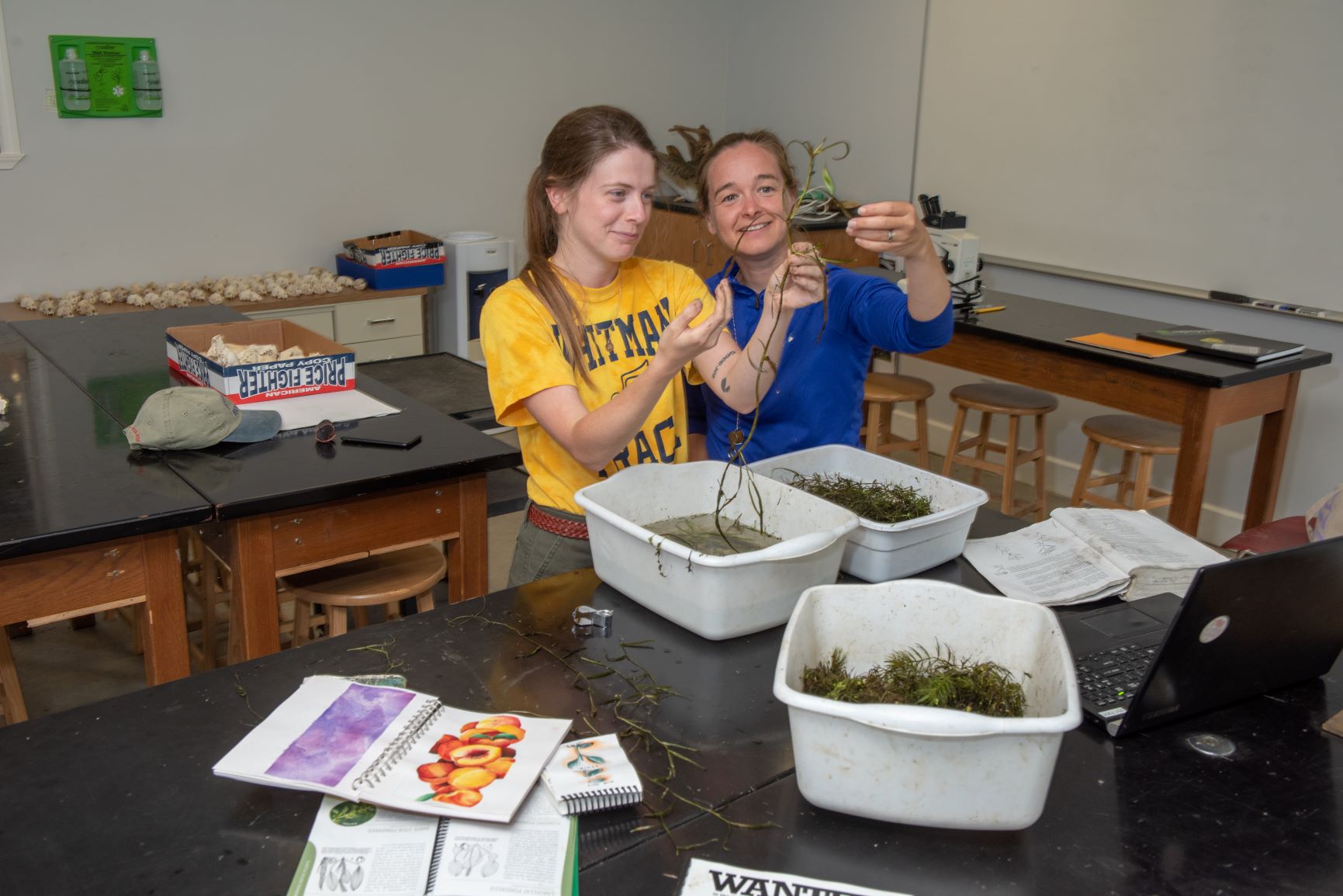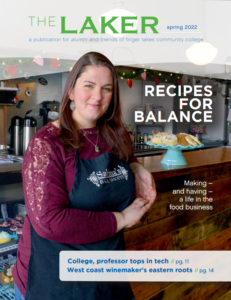
About two dozen interns have tackled 13 conservation projects over the last year at the College’s Muller Field Station at the south end of Honeoye Lake.
The projects involve monitoring the state of the animal and plant life at the field station and surrounding areas to generate data that can be used by a broader community of scientists and educators.
For example, student Amy Slentz gathered aquatic plants from the Honeoye Lake Inlet in summer 2021 to look for invasive species under the guidance of Maura Sullivan, associate professor of environmental conservation and coordinator of the internship program.
FLCC is participating in iMapInvasives, a citizen science program in which residents can submit information about suspected invasive species for confirmation by experts. The College is also part of the aquatic invasive species monitoring program of Finger Lakes PRISM, which stands for partnership for regional invasive species management.
“The good news is that we did not find any of the new and emerging, especially problematic invasive species in the inlet channel during our summer sampling,” Maura said. They were looking for hydrilla, water chestnut and starry stonewort.

Amy also took part in a partnership project with the Bergen Swamp Preservation Society monitoring grassland birds at Taylor Marsh, 600 acres north of Honeoye Lake.
Some projects last for a few months, others continue over years with new groups of students stepping in as others graduate or transfer. Professor John Van Niel, director of the station, and a rotating group of students have been examining the stomach contents of fishers that have been caught by fur trappers to provide the state Department of Environmental Conservation with data on what the weasel-like mammals eat. (Read about it in the FLCC blog at forward.csc.flcc.edu.)
Students also monitored reptiles and amphibians (herptiles) on the station property, gypsy moths at the field station and Onanda Park in the town of Canandaigua, prothonatory warbler nest boxes at the station, and camera traps set up at the station and the East Hill Campus in Naples to catch images of animal life when humans are not around.
The students are learning scientific methods for collecting information about the natural world that can have policy consequences. For example, when invasive species are detected, local governments have to decide whether to spend public funds to limit or remove the species.
This scenario played out last year as the city of Canandaigua debated whether to use an herbicide to combat European buckthorn in Lagoon Park, which runs along Lakeshore Drive behind Wegmans. FLCC faculty and students have assisted with projects to plant native species at the park and monitor progress.
“Students relish this opportunity to get hands-on experience, connect with the natural world, and contribute to a greater understanding of phenomena they study,” Maura said. “Although students might be working on individual projects, this helps cement the reality that they are definitely part of something bigger.”
At the end of their internships, students have been sharing their findings and reflections with other students and faculty, and that may expand to public presentations, she added.
Amy said she values the professional setting that the internships create. “My internship and work within the Conservation Department has helped to nourish my innate passion for the natural world as well as cultivate a deeper enthusiasm around environmental work,” she said.
The Florence M. Muller Foundation has provided funding for the internships for the last three years. The foundation is the legacy of the late Florence Muller, who donated the field station land and buildings to FLCC in 1999 and set up funds for the improvement and operation of the 48-acre property as an education and research center. It had once served as a summer retreat for Florence and her husband, Emil.

